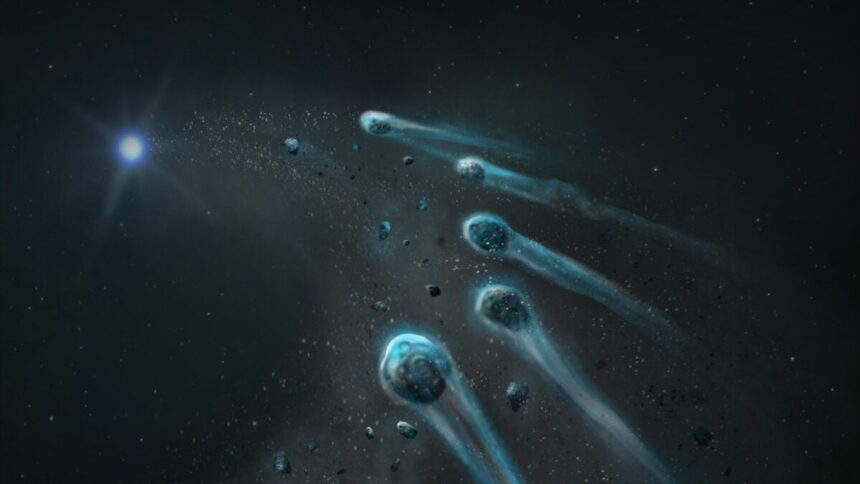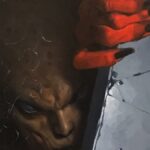Nature can get brutal. On a cosmic scale, things get even more destructive—leaving behind carnage made of stellar dust the size of an entire planet.
Astronomers using the Hubble Space Telescope spotted a white dwarf—the remnant of a dying star’s core—enjoying a meal of some fragment researchers later identified as coming from a Pluto-like object. According to a paper on the finding published September 18 in Monthly Notices of the Royal Astronomical Society, astronomers seemingly caught the dwarf near the tail end of its meal; some time ago, the dwarf’s intense gravitational pull likely snatched an icy planet from its regular orbit.
What’s more, further analysis of the doomed object revealed that its chemical composition included key elements such as carbon, sulfur, nitrogen, and oxygen—suggesting that, before its demise, the tiny planet may have held some water on its surface.
A ‘cosmic crime scene’
The atmosphere of a white dwarf typically consists of hydrogen and helium. But this particular dwarf, WD 1647+375, carried an unusual supply of volatiles, or chemical substances with low melting points. That told the researchers that something was off.
“White dwarfs act like cosmic crime scenes,” study lead author Snehalata Sahu said in a release. “When a planetesimal [small solid objects thought to form planets] falls in, its elements leave chemical fingerprints in the star’s atmosphere, letting us reconstruct the identity of the ‘victim.’”
So the team embarked on some detective work. One thing that stood out to them was the abundance of nitrogen in WD 1647+375, which the researchers explained was a “particularly important chemical fingerprint of icy worlds.” The dwarf’s oxygen gain was also much higher than it would have been had the victim been a rocky object.
“We know that Pluto’s surface is covered with nitrogen ices,” Sahu added in a Hubble statement. “We think that the white dwarf accreted fragments of the crust and mantle of a dwarf planet.”
From Hubble’s ultraviolet signals, the team was able to deduce that the star’s meal had been ongoing for at least the last 13 years, consuming the object at a rate of around 440,925 pounds (200,000 kilograms) per second. If so, the victim at its prime would have had a minimum diameter of about 3 miles (5 kilometers).
All the evidence suggested that WD 1647+375 was snacking at an object that was once an icy planetesimal floating around the local version of the Kuiper Belt, an icy ring of debris around our solar system.
A peek into the past and future
This discovery offers a surprising window into both the past and future of cosmic systems, the researchers explained.
For instance, comets and icy planetesimals like WD 1647+375’s giant snack “deliver water and other volatiles to terrestrial planets in extrasolar systems—a prerequisite for the development of life in other worlds,” according to the paper. Now that we know such icy planetesimals do exist, this theory could be tested further with other objects, namely the recent interstellar comet visitor, 3I/ATLAS.
But WD 1647+375 itself offers a sneak peek of what’s to come for our own solar system, Sahu added. Our Sun will eventually burn out and collapse into a white dwarf like WD 1647+375. When that happens, the planets in our solar system may encounter a similar fate as this icy planetesimal.
“If an alien observer looks into our solar system in the far future,” Sahu said, “they might see the same kind of remains we see today around this white dwarf.”
Read the full article here












